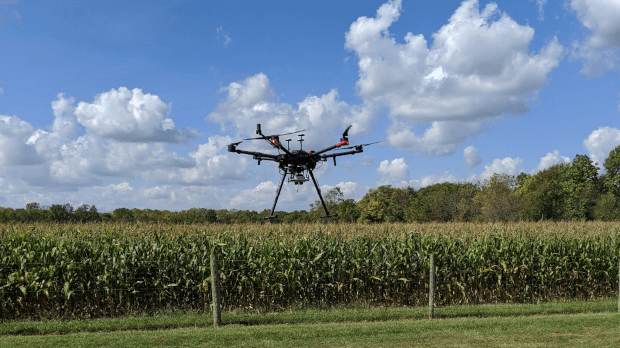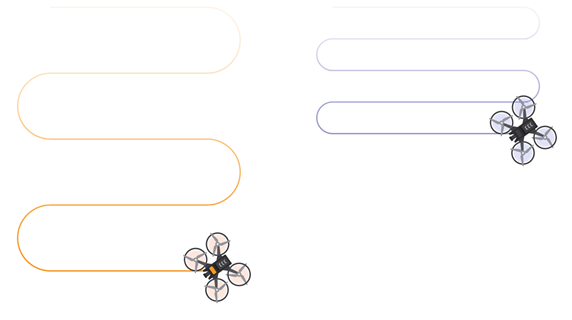World population is on the rise, with estimates of 8 billion people by 2025. But how to feed the growing population while conserving our forest and wildlife reserves? The answer lies in leveraging technology in order to use our existing agricultural land more efficiently.
What is precision agriculture?
Precision agriculture means making the process of crop or livestock farming more accurate and controlled by using information technology and high-tech equipment such as sensors, GPS, control systems and robots. The concept of precision ag was born around 1990 with tractor guidance as its primary application. Today precision ag and automation is becoming commonplace, from aerial crop monitoring to automated targeted spraying. The precision ag market is growing exponentially and, according to forecast reports, will be worth over $10 billion by 2025.
High accuracy GPS+INS opens the door to new possibilities
Open fields are an ideal environment for GPS positioning where satellite visibility is seldomly obstructed. Sentera, a Minneapolis-based company, is leveraging top-quality GPS + INS (Inertial Navigation System) technology together with their industry leading multispectral cameras and AI to create cutting-edge precision farming sensors.

Sentera’s sensors are flown by aerial drones to create accurate maps showing crop health, weed and pest locations, as well as plant population counts. High-quality RGB and NDVI (Normalized Difference Vegetation Index) cameras are coupled with AI image recognition software. Many crop issues can be detected with NVDI cameras even before they can be recognized by the human eye. The imagery is then tagged with precise location information provided by a Septentrio multi-frequency multi-GNSS receiver (GNSS: Global Navigation Satellite System of which GPS is a part). On top of that, image location information is enhanced with 3D orientation (heading, pitch and roll) provided by the INS, which is coupled with the GPS receiver.
Below is a list of 5 advantages that high-precision GNSS+INS technology, such as Sentera’s sensors, brings to mapping today’s farms:
- Precise weed and pest maps serve as an input for modern large-scale sprayers which are designed to spray with decimeter precision. Spraying only where needed saves cost and reduces the environmental impact of chemical and fertilizer use.
- When two different plant species are grown in adjacent rows, precise positioning is needed to monitor each individual species. One such example is at the connecting boundary of two different crop fields. Another example is a plant breeding farm where different plant hybrids occupy small-sized test plots next to each other.
- Field surveying is completed faster and covers broader areas. Utilizing high-accuracy positioning and orientation information removes the need for image stitching software. Images are projected on a terrain model and their accurate positioning is used to create a single orthorectified image. This is referred to as “direct georeferencing”. Unlike traditional image stitching processes based on feature matching between two or more adjacent overlapping photos, direct georeferencing is not sensitive to image overlap requirements. Less strict overlap requirements mean that drones can fly in lines which are further apart, enabling broader field coverage with one battery.
- Since image stitching is not needed, the image-processing step is simplified and field statistics can be obtained in real-time on the sensor, without the need for cloud computing or post-processing.
- High-quality positioning and camera sensors allow higher altitude flights, increasing the land surface area captured in each image and resulting in a larger total coverage area per flight. Small errors in the camera orientation have a greater effect on the image projection accuracy at higher altitudes, but recent advances in sensor technology have enabled drones to fly higher while still collecting data with enough accuracy for precision agriculture applications.

GNSS+INS enables orthorectified images without stitching
Sentera utilizes Septentrio AsteRx-i GNSS + INS receivers for centimeter-level positioning and orientation. “We chose Septentrio because they have the best price-to-performance ratio on the market,” said Brian Eickhoff, Chief Embedded Software Engineer at Sentera. “The integration process went smoothly, and we saw outstanding positioning performance and reliability. The GNSS + INS system was able to deliver accurate enough positioning and orientation information to create an orthorectified mosaic without the need for image stitching.”
Precision farming solutions, such as the crop monitoring sensors offered by Sentera, help farmers make informed decisions about their crops. Optimizing yields and saving costs makes crop production more efficient, helping farmers prepare for the future.
Watch the above Sentera video to see crop monitoring drones in action. The drones feature Sentera’s most recent 6X multispectral sensor coupled with Septentrio’s GNSS + INS positioning and attitude (heading, pitch and roll) system.

